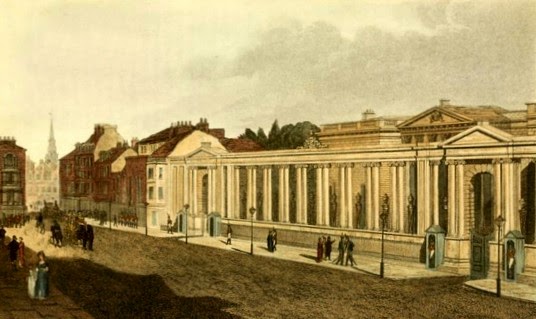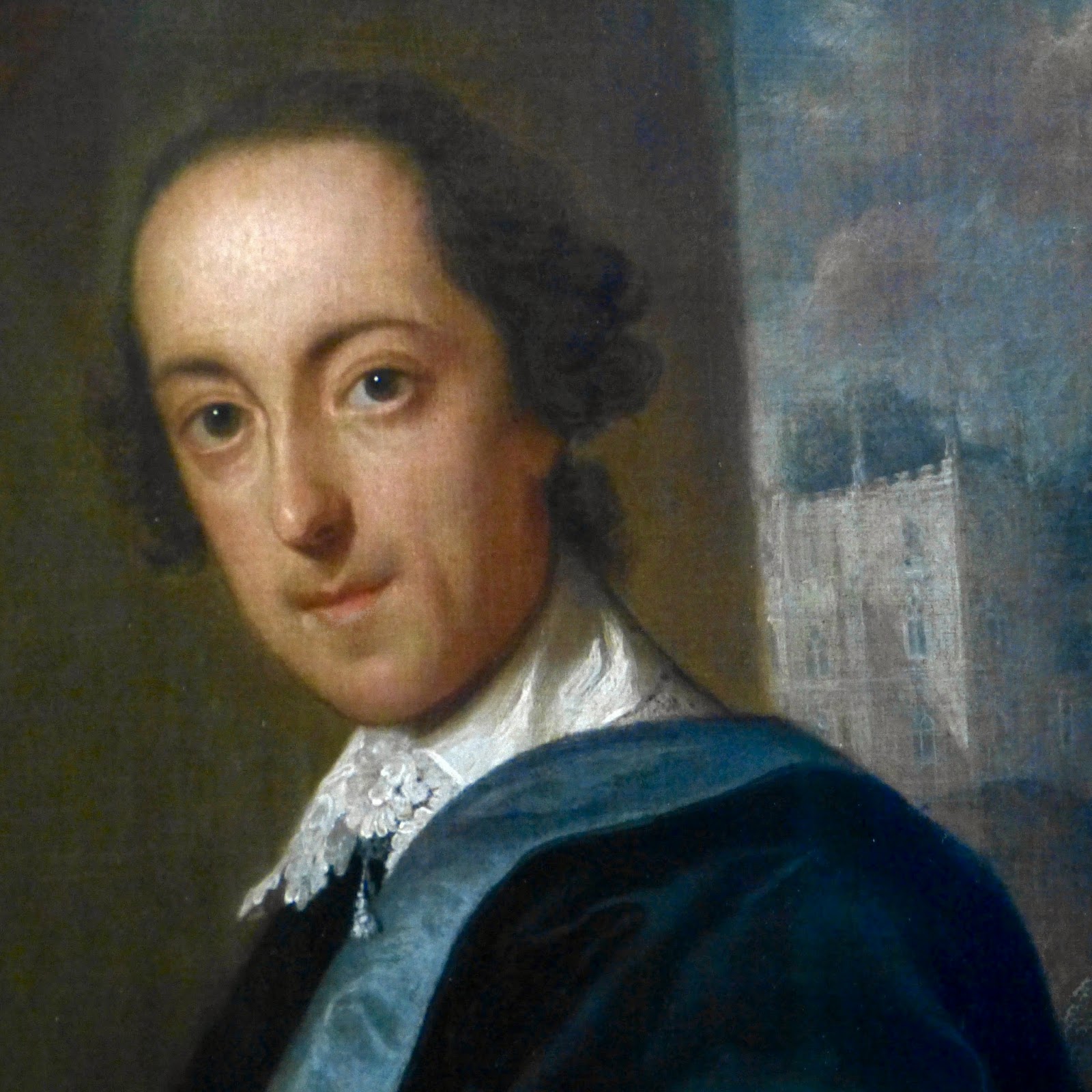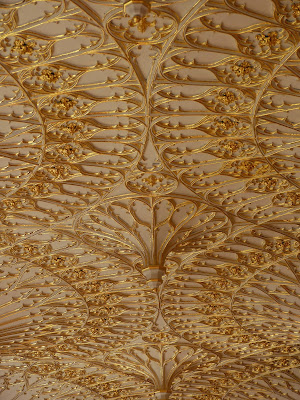 |
| Ladies' voucher for Almack's - used with kind permission STG Misc. Box 7 (Almack's Voucher) © The Huntington Library, San Marino, CA |
Why was an Almack’s voucher so important?
Almack’s Assembly Rooms were the most exclusive venue in Regency London. Almack’s was the place that ladies and gentlemen of quality went to see and be seen in the hopes of finding a suitable marriage partner. But why was it so exclusive? Because you were only admitted if you had a voucher and you could only get a voucher if you were approved by one of the lady patronesses.
You can read more about Almack’s here.
What was an Almack’s voucher like?
 |
| My Regency reticule with a printed copy of the voucher for Almack's Image of Almack's voucher used with kind permission STG Misc. Box 7 (Almack's Voucher), © The Huntington Library, San Marino, CA |
Fortunately, I knew where to start looking. The only Almack’s voucher that I have ever seen on the internet is part of the Stowe Collection held at the Huntington Library in San Marino, California, USA. It was included in an exhibition in 2011, Revisiting the Regency: England, 1811-1821.
Vanessa Wilkie, Curator of Medieval and British Historical Manuscripts at the Huntington Library, has the voucher in her care and was able to help me.
She told me that the voucher was printed on very strong cardboard and was about the same size as a business card – approximately 2.5 inches by 3.5 inches (or 6.25cm by 8.75cm). To help me get a feel for what this was like, I printed out the image using these dimensions. As you can see from the photograph, it would easily fit inside my Regency reticule.
 |
| My Regency reticule with a printed copy of the voucher Image of Almack's voucher used with kind permission STG Misc. Box 7 (Almack's Voucher) © The Huntington Library, San Marino, CA |
The voucher was issued to the Marchioness of Buckingham for the balls on the Wednesdays in April 1817. But who was she?
 |
| Evening dress from Ackermann's Repository (March 1817) |
I cannot help wondering whether any of the patronesses of Almack’s would have granted the unsavoury Marquess a voucher or not.
Vanessa told me that her predecessor, Dr Robertson, had noted that the initials in the bottom right-hand corner ‘M.D’ “might be Mary Marchioness of Downshire who may briefly have been a patroness ca. 1816-17.”2
I have read on several Regency blogs that the Marchioness of Downshire was a patroness of Almack's. This is supported by contemporary correspondence and lists of patronesses in advertisements for the balls at Almack's in the Morning Post.3
 |
| Evening dress from Ackermann's Repository (May 1817) |
What else can we learn from the voucher?
 |
| Verso of ladies' voucher for Almack's Used with kind permission STG Misc. Box 7 (Almack's Voucher) © The Huntington Library, San Marino, CA |
 |
| Carlton House, with its main entrance facing Pall Mall from Ackermann's Repository (1809) |
If you have enjoyed this blog and want to encourage me and help me to keep making my research freely available, please buy me a virtual cup of coffee by clicking the button below.
(1) From The Times, London, 18 June 1816, The Times Digital Archive accessed 24 Jan 2015.
(2) From the catalogue notes for the voucher at the Huntington Library.
(3) For example, Jane Austen’s World blog, Candice Hern’s Facebook page and Carolyn Jewel’s comment on the Huntington Library’s Flickr image of the voucher.
(4) From an 1819 entry in Life, Letters and Journals of George Ticknor (1876).
(5) From comments by the Huntington Library on their Flickr image of the voucher.
Sources used include:
Thompson, FML, Grenville, Richard Temple-Nugetn-Brydges-Chandos, 1st Duke of Buckingham and Chandos (1776-1839), Oxford Dictionary of National Biography (Oxford University Press, 2004; online edn May 2009, accessed 24 Jan 2015)
Ticknor, George, Life, Letters, and Journals of George Ticknor (1876)
Richey, Rosemary, Hill, Mary, Marchioness of Downshire and suo jure Baroness Sandys of Ombersley (1764-1836), Oxford Dictionary of National Biography (Oxford University Press, 2004; online edn Jan 2008, accessed 24 Jan 2015)
The image of the Almack's voucher is used with kind permission from the Huntington Library: STG Misc. Box 7 (Almack's Voucher), © The Huntington Library, San Marino, CA.
If you wish to download a low resolution image of the voucher for your personal use, please follow this link to The Huntington Digital Library.
All photographs © RegencyHistory.net



%2B'dared'%2Bby%2BHume%2Bin%2BThe%2BQueens%2Bof%2BSociety%2Bby%2BWhartons.jpg)
































